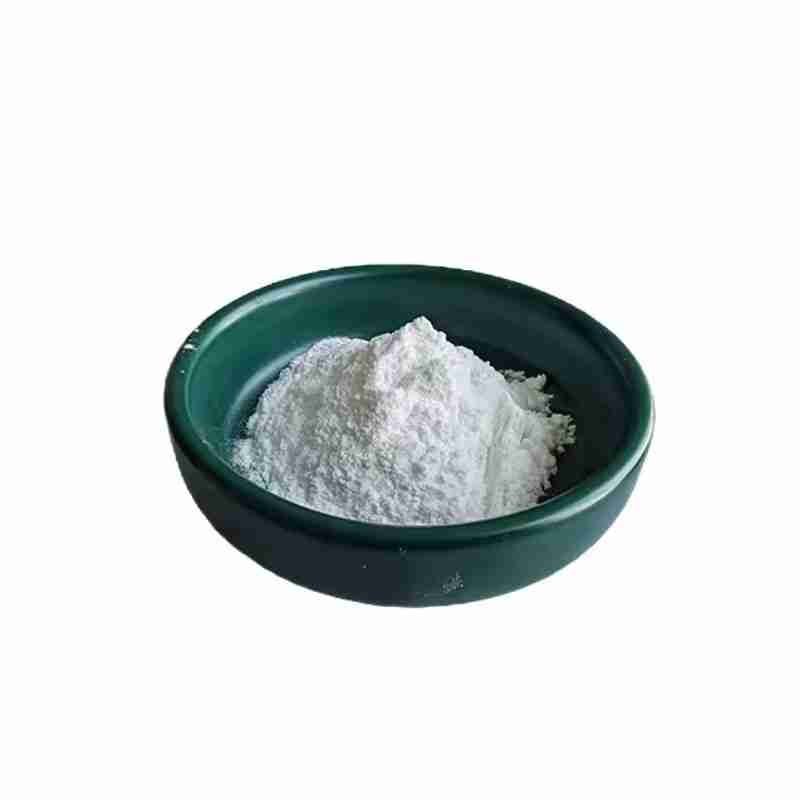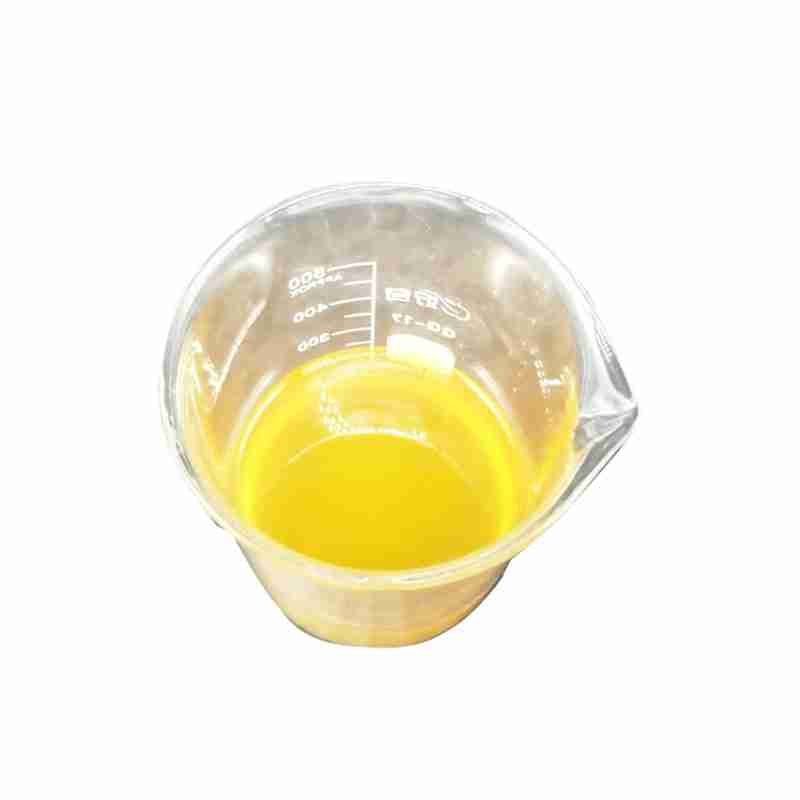1,8-Diazabicyclo[5.4.0]undec-7-ene CAS# 6674-22-2 DBU
1,8-Diazabicyclo [5.4.0] undec-7-ene is a bicyclamidine base. In natural chemistry, it is a non nucleophilic, sterically impeded tertiary amine base. It is reported that it is superior to amine drivers in Baylis Hillman response and can advertise the methylation response of phenol, indole as well as benzimidazole with dimethyl carbonate under mild conditions.
1,8-Diazabicyclo [5.4.0] undecanon-7-ene, referred to as DBU, is a type of amidine with a dual heterocyclic framework. It is an anemic or light yellow liquid at space temperature level, as well as can be dissolved in water, ethanol, acetone as well as other natural solvents. It is normally saved listed below 30 ??.
发送询盘
1,8-Diazabicyclo[5.4.0]undec-7-ene CAS# 6674-22-2 DBU
| DBU Basic information |
| Product Name: | DBU |
| Synonyms: | 1,8-DIAZABICYCLO[5.4.0]UNDEC-7-ENE;1,8-DIAZABICYCLO[5.4.0]UNDEC-7-ENE (1,5-5);1,8-DIAZEBICYCLO[5.4.0]UNDEC-7-ENE;1,8-Diazabicyclo[5.4.0]undecane-7-ene;1,8-Diazabicyclo(5 x 4 x 0)undec-7-ene;Pyrimido[1,2-a]azep;1,8-Diazabicyclo[5.4.]undec-7-ene;1,8-Diazabicyclo[5.4.0]undec-7-ene, 98% 100GR |
| CAS: | 6674-22-2 |
| MF: | C9H16N2 |
| MW: | 152.24 |
| EINECS: | 229-713-7 |
| Product Categories: | pharmacetical;Pyridines;Other Reagents;Biochemistry;Reagents for Oligosaccharide Synthesis;Biochemics;pharmaceutical raw material;Organic intermediates;OLED materials,pharm chemical,electronic;A clear, light yellow liquid of relatively low volatility. It has only a slight ammonia-like odor, is miscible with water and is soluble in most organic solvents.;bc0001 |
| Mol File: | 6674-22-2.mol |
 |
|
| DBU Chemical Properties |
| Melting point | -70 ??C |
| Boiling point | 80-83???C0.6?mm Hg(lit.) |
| density | 1.019?g/mL?at 20???C(lit.) |
| vapor pressure | 5.3 mm Hg ( 37.7 ??C) |
| refractive index | n20/D?1.523 |
| Fp | >230???F |
| storage temp. | Store below +30??C. |
| solubility | soluble |
| form | Liquid |
| pka | 13.28??0.20(Predicted) |
| color | Clear colorless to light yellow |
| Odor | Unpleasant |
| PH Range | 12.8 at 10 g/l at 20 ??C |
| PH | 12.8 (10g/l, H2O, 20??) |
| explosive limit | 1.1-6.5%(V) |
| Water Solubility | soluble |
| Sensitive | Air Sensitive |
| BRN | 508906 |
| Stability: | Stable. Incompatible with strong oxidizing agents, acids, acid chlorides, acid anhydrides. |
| InChIKey | GQHTUMJGOHRCHB-UHFFFAOYSA-N |
| CAS DataBase Reference | 6674-22-2(CAS DataBase Reference) |
| NIST Chemistry Reference | 1,8-diazabicyclo [5.4.0]undec-7-ene(6674-22-2) |
| EPA Substance Registry System | Pyrimido[1,2-a]azepine, 2,3,4,6,7,8,9,10-octahydro- (6674-22-2) |
- 2
- 2-diallylpent-4-en-1-amine
- 4
- 95-16-9
- Ammonium sulfamate
- Benzothiazole
- cas:67889-00-3ح2
- cas:83524-75-8 | pigment black 32
- cas:928836-00-4 | 2
- cas:932745-70-5 | 4
- Chemical Minerals
- Coconut diethanolamide
- Daily Chemicals
- discount
- for sale
- General pvc resin
- hexyl D-glucoside
- in stock
- Lauramidopropyl betaine
- LAURIC ACID MONOETHANOLAMIDE
- Petroleum Additives
- Plasticiser
- Ploymers
- price
- PVC
- quotation
- Raw Materal
- Remove term: Petroleum Additives Petroleum Additive
- SODIUM ETHYL 2-SULFOLAURATE
Related Products
Tetraacetylethylenediamine is a fully acetylated derivative of ethylenediamine, offering a high reactivity as an intermediate in organic synthesis. Its unique structure makes it a critical component in the production of specialty chemicals and pharmaceuticals, ensuring a wide range of applications in the chemical industry.
Chemical Name: Choline salicylate
CAS No.: 2016-36-6
Molecular Formula: C12H19NO4
Molecular Weight: 241.28
Appearance: Red-Brown Crystal
Chemical Name: Ammonium Iron(II) Sulfate
Synonyms: Diammonium iron bis(sulphate); iron (ii) ammonium sulfate
CAS No.: 10045-89-3
Molecular Formula: FeH5NO4S
Molecular Weight: 170.95
Chemical Name: STODDARD SOLVENT
CAS No.: 64742-88-7
Appearance: Colorless or Light Yellow Liquid
Octocrylene is an organic compound widely recognized for its potent UV-filtering properties, making it an essential ingredient in sunscreens and other skincare products designed to protect the skin from harmful ultraviolet radiation. With the chemical name 2-(4-Methylbenzyl)-2H-benzotriazole-5-methyl, octocrylene is a stable and photostable molecule that provides broad-spectrum protection against both UVA and UVB rays.
This oil-soluble chemical is valued for its ability to absorb UV radiation effectively, converting it into heat without causing skin irritation or staining clothes. Octocrylene is often used in combination with other UV filters to enhance the sun protection factor (SPF) of formulations, ensuring a balanced and comprehensive defense against sun damage.
As a lipophilic compound, octocrylene is compatible with various cosmetic and dermatological formulations, contributing to the development of lightweight, non-greasy sunscreens. Its chemical structure allows for a high degree of safety and efficacy, making it suitable for a wide range of skin types, including sensitive skin.
In summary, octocrylene is a reliable and efficient UV filter, pivotal in the formulation of modern sunscreens that offer advanced protection against the sun’s harmful effects while maintaining skin comfort and product aesthetics.
Silicones are a family of synthetic polymers known for their versatility and stability. They are heat-resistant, non-toxic, and have excellent electrical insulation properties. Commonly used in various industries such as construction, automotive, aerospace, and personal care products, silicones offer a wide range of applications from sealants and adhesives to lubricants and medical devices. Their resistance to extreme temperatures and weathering makes them a preferred choice for many high-performance applications.
Chemical Name: Imazalil Sulfate
CAS No.: 58594-72-2
Molecular Formula: C14H14Cl2N2O.H2SO4
Molecular Weight: 395.26
Appearance: Solid
1-Octanol, also known as Capryl alcohol or n-Octanol, is a clear, colorless liquid with a characteristic waxy odor. It is an alcohol with eight carbon atoms in its chain, making it a part of the aliphatic alcohol family. This compound is poorly soluble in water but is miscible with ethanol, diethyl ether, and chloroform . It has a melting point of approximately -15??C and a boiling point of around 196??C . 1-Octanol is used in the production of esters, plasticizers, and as a solvent or intermediate in the synthesis of various organic compounds. It also finds application in the fragrance industry as a fixative in perfumes and can be used in the formulation of flavor and scent compositions . It is important to note that 1-Octanol is flammable and should be handled with care, storing it away from sources of ignition and heat .
Product name:HYDROXYPROPYL GUAR HYDROXYPROPYLTRIMONIUM CHLORIDE
Purity:99%
Appearance:Light Yellow Powder
Package:Customized according to customer needs.
Sample:Available
Butylated Hydroxytoluene (BHT) is a synthetic phenolic antioxidant commonly added to foods, cosmetics, and packaging to prevent the oxidation of fats and oils, thereby extending their shelf life. It is also used as a preservative in a variety of products, including rubber, petroleum products, and animal feed. BHT is recognized for its effectiveness in maintaining nutrient levels, color, flavor, and odor in food products . It is known to have a melting point of 69-71??C, a boiling point of 265??C, and is soluble in ethanol, acetone, and benzene, but not in water, glycerin, or propylene glycol . BHT is also used in some dietary supplements due to its antioxidant properties . However, it is important to handle BHT with care, as it can cause skin irritation and is considered harmful if swallowed .
Terpene resin is a type of natural resin derived from terpenes, which are organic compounds found in various plants. It is known for its aromatic properties and is commonly used in the production of fragrances, flavorings, and as a component in adhesives and coatings within the chemical industry. Terpene resin offers a range of benefits, including enhancing the solubility of essential oils and providing a stable base for various applications. Its natural origin makes it a preferred choice for eco-friendly products.
Polyhexamethylene guanidine hydrochloride, often abbreviated as PHMG-HCl, is a high molecular weight polymeric biguanide compound known for its potent antimicrobial properties. With a chemical structure that features a long chain of methylene groups bridged by guanidine units, PHMG-HCl is effective against a broad spectrum of microorganisms, including bacteria, viruses, and fungi.
This hydrochloride salt form of PHMG is highly soluble in water and is commonly used in various applications due to its non-irritant and non-toxic nature to human skin and mucous membranes. It is widely recognized for its ability to form a colorless and odorless solution, making it an ideal choice for use in personal care products, medical disinfectants, and water treatment processes.
The versatility of PHMG-HCl lies in its cationic nature, which allows it to bind to negatively charged microbial cell walls, disrupting their integrity and leading to cell death. This mechanism of action contributes to its effectiveness as a preservative and disinfectant. Moreover, its substantivity, or the ability to adhere to surfaces, enhances its long-lasting antimicrobial activity.
In summary, Polyhexamethylene guanidine hydrochloride is a reliable and efficient antimicrobial agent, pivotal in industries where hygiene and cleanliness are paramount, offering a safe and sustainable solution for microbial control.



















